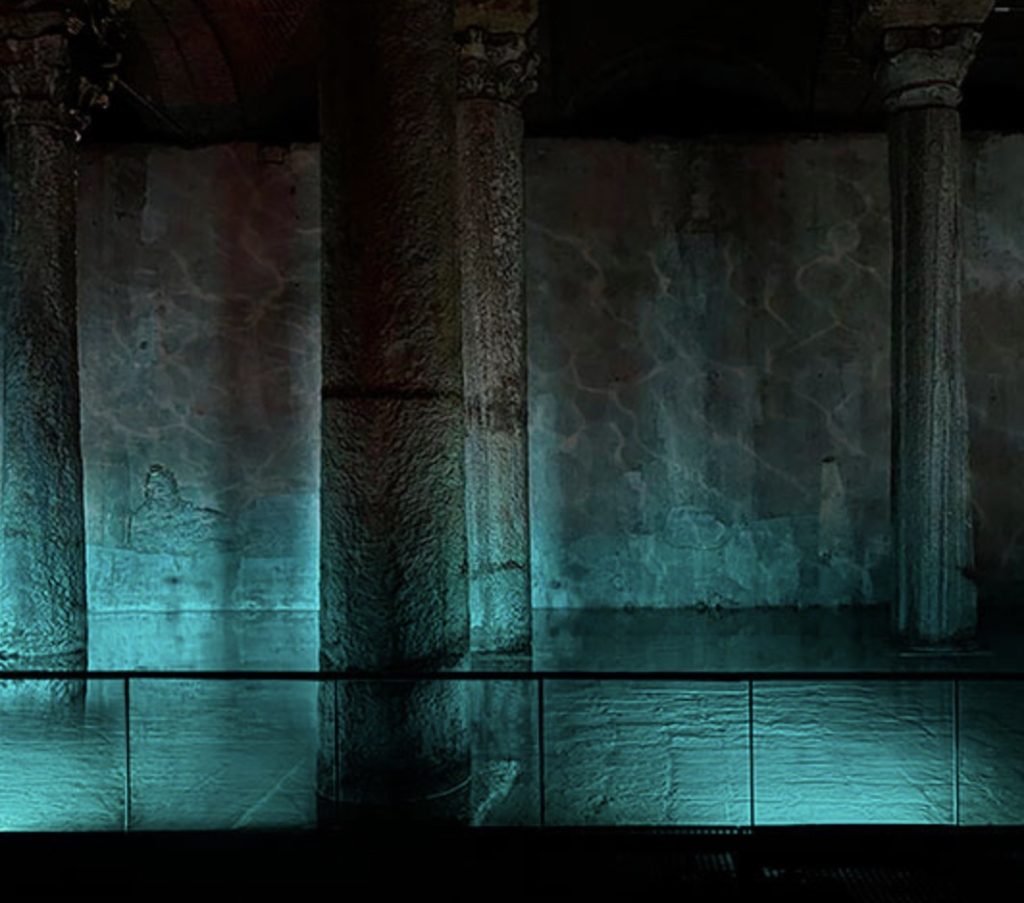By Studioillumina di Adriano Caputo
The lighting design of the Basilica Cistern involved studying the history of its architecture, the societies and cultures that interacted with it, and the people who rediscovered it. These multiple cultural identities became the guide of the lighting concept, with the aim of conveying their stories to the visitor.
Conceptually the Cistern, built in the Roman age around the middle of 500 AD, embodies the Western world into the cradle of the Eastern world, combining the Roman and Ottoman traditions and cultures. To describe the coexistence of the two worlds, Studioillumina decided to celebrate their different traditions of visual representation: the Oriental world, with its typical two-dimensional drawings and historical miniatures, and the Western world, based on the use of perspective and three-dimensionality. The two visualization styles are translated into two different lighting techniques. This way the Cistern gives light to, but is also lit by, the two cultures who built and lived it.

Through the columns’ lighting, the visitor’s journey is divided into three consecutive stages:
1 – The outward journey is like entering a forest revealed only by the backlight, inspired by the ancient world of miniatures. This a tribute to the Eastern world, in which perspective does not have central importance, but tends to disappear to make room for design and shapes.
In this context, the entry into the “wood" is flanked by a two-dimensional element that accompanies the visitor to discover the space. A single elliptical beam projector, positioned on the opposite side of the direction of travel, up-lights each column. The use of a gradual decrease in brightness levels as one walks into the underground space takes the visitor experience towards an almost archaeological and personal exploration of the cistern.
2 – Medusas represent the end of the outward journey and the beginning of the return journey. Here, the two-dimensional world and the three-dimensional one blend together in the Cistern architecture, which is revealed in its two identities. Medusas represent an existential moment in the inner unconscious dimension, a place of suspension and reflection.
3 – From this moment on, the return trip starts and the three-dimensional world shows the Cistern by enhancing it structurally and architecturally in a tribute of the western world and perspective. The same elliptical beam projectors are now on the same side to the direction of travel.

Colour and horizontal planes:
Every 4 minutes of the journey, the light of the columns dissolves in order to leave room for another protagonist of the scene: submerged grazing lights show the original uneven floors and the bases of all columns by painting them in aquamarine colour. After another minute, also the vaults are lit in amber colour. In an unexpected and suggestive way, the Cistern is tinged with the characteristic atmospheres of Turkey, changing from aquamarine to amber.
The colours of zultanite, the Anatolian gem that changes its colour passing from turquoise aquamarine vibrations to amber, when exposed to the flickering light of a torch.









